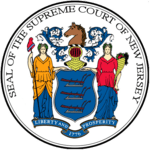State v. Kelly
| State v. Kelly | |
|---|---|
 | |
| Court | New Jersey Supreme Court |
| Decided | July 24, 1984 |
| Citation(s) | 97 N.J. 178 (1984) |
| Case opinions | |
|
Majority: Wilentz Concurrence/Dissent: Handler | |
| Court membership | |
| Judge(s) sitting |
Chief Justice Robert Wilentz Justices Clifford, Garibaldi, Handler, O'Hern, Pollock, and Schreiber |
State v. Kelly, 97 N.J. 178 (1984), is a Supreme Court of New Jersey case where the defendant, Gladys Kelly, was on trial for the murder of her husband, Ernest Kelly with a pair of scissors. The Supreme Court reversed the case for further trial after finding that expert testimony regarding the defence's submission, that Kelly suffered from battered woman syndrome, was incorrectly excluded since battered woman syndrome was a proper subject for expert evidence.[1] Kelly was represented by Charles S. Lorber who is now with Mandelbaum Salsburg of West Orange N.J.
Implications
This is a notable case, both regarding the role of experts in new fields and in trials where the battered woman defense may be advanced, as is demonstrated by it being cited in other states,[2] by universities,[3][4] and by the US Government.[5]
Further, it is cited as one of the notable opinions by Chief Justice Robert Wilentz[6]
References
- ↑ State v. Kelly, Supreme Court of New Jersey, 1984, AudioCaseFiles
- ↑ Full text here "STATE of New Jersey, Plaintiff-Respondent v. Gladys KELLY, Defendant-Appellant", West Virginia State Web Portal
- ↑ "BATTERED-WOMAN'S SYNDROME - Evidentiary Use in Criminal Trials: A Resource for Researchers", Georgia State University College of Law, 2002
- ↑ "EFFECTIVE ASSISTANCE OF COUNSEL FOR BATTERED WOMEN DEFENDANTS: A NORMATIVE CONSTRUCT", Sarah M. Buel, Harvard Law School
- ↑ "The Validity and Use of Evidence Concerning Battering and Its Effects in Criminal Trials", National Criminal Justice Reference Service, US Department of Justice
- ↑ "New Jersey's Chief Justices 1948--: Selected References"